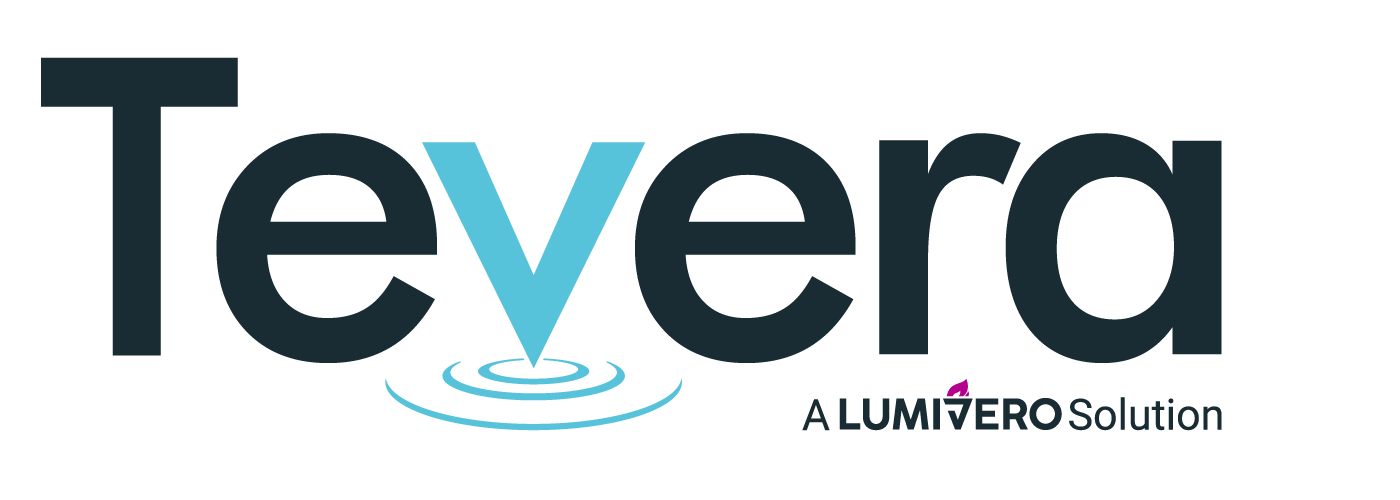Profiles in Care: A Journey from Social Worker to Dean to Software Consultant
We have had the pleasure of working with and learning from a social worker-turned-dean-turned-tech consultant, for a while now. Her story, starting as a social worker and ending with her as a software consultant for social work programs, is a fascinating exploration of what it means to serve others at every stage in one’s career.
Let’s dive in.
Q: We’ll start with an easy question! Please introduce yourself.
*Please note that we have kept names hidden out of respect for our community member’s privacy.
A: I consult with social work programs about how to implement technology to streamline their operations.
So, working backwards, I first met the Tevera team when I worked for a different edtech company where I had been running their U.S. operations for five years. Before that I was in academia and had been the Dean of an undergraduate social work program.
I’m a social worker by training and had started my career working in field placement offices at universities. It was really through this role that I ended up playing around with our technology systems. No one else liked it but I did, so I ended up doing most of it.
Q: Tell me about that. What was the transition to the tech side like?
A: It was fine, actually. I still did the social work. I had always placed students as part of my past role and I had always really enjoyed that. I’ve always liked working with students because of the personal relationships and the impact but I’ve also always liked technology. So blending the two together felt right.
Actually, I first started embracing the technical side of the job because I once had a boss who didn’t enjoy software. He assigned me to it and I kinda fell into my own world. I was happy to do it. It was a nice way to make a big difference for my program and in my students’ lives without having my schedule eaten up by some of the other activities that come with being in academia.
For me, being able to work behind the scenes and focusing on efficiency, is hugely fulfilling.
Q: Why did you originally start your career in social work?
A: I wanted to help people. I was a psychology major but then the more I studied psychology, the more I realized it was a lot about diagnosing. I wanted to be more on the ground working with people, developing programs and that kind of thing. So then I got my degree in social work.
Then, I was a social worker, on the ground, for several years. I started an early head start program that was for teenagers and their babies. I also worked for a healthy start program where I worked with pregnant women who had substance abuse problems.
At that job, the university started sending me interns so I got to experience field education from the supervisor angle too.
Then my next job was working for the university but supervising interns in the community. I worked at a lot of different nonprofits overseeing social work students. Then the university sucked me in all the way. Then tech sucked me in farther.
Q: Can you tell me more about that stage of your career?
A: Sure. I guess I’ve always wanted to be helpful. When I was working with nonprofits, I really liked working with the teenage parents. I really enjoyed just helping them get on their feet and find their way. It was kind of the same with students while working for the social work program.
The thing that was most exciting was talking to students about what their interests were. Many times I would read their field applications and then they would come to meet with me. They would have some ideas but then we talk and we come up with something totally different. It was neat to see. The interaction was fun and it was neat to see them spark up when I talked about certain things. Even if they didn’t know what they were interested in, it was pretty clear to me because their whole body language and their face and everything would change. I liked making those matches. I’ve always liked being a matchmaker.
Q: Did that play into your love of tech at all? The matching behind the scenes, making things streamlined?
A: Absolutely. I hate inefficiency. I’ve always liked systems. When I helped build nonprofits we were always thinking about “how do we get from A to B in the most streamlined way?”
The early head start that I worked at was federally funded. There were lots of grants and lots of bureaucracy and a lot of standards that we had to meet. I liked being the person on the ground figuring out “how do we meet these and not drive everybody crazy?”
I feel like that’s the same with technology. How do we help people to move forward and also not make it so onerous that the technology is worse than not having it? How do we just make people’s lives easier so they don’t have to focus on technology when they really don’t want to?
Q: It sounds like you really view technology as a helping tool.
A: Absolutely.
Q: What were some of the biggest challenges you found with field placement in all your roles?
A: One of the biggest was when we’d get students who just weren’t right for the profession. At the undergraduate level we can provide more guidance around career paths and maybe help them choose a path that seems more suited to their passions and personalities. But with the graduate school, we couldn’t do that. We’d get the students, we had to place them regardless if we thought they were a good fit or not. That was a challenge for me because sometimes I just knew a student wasn’t going to do well.
This can lead to some tough conversations when they’re out in the field. And it can put a burden on field supervisors, who are out in the community working with these students. Figuring out how to give appropriate feedback that’s timely and helpful while also balancing your agency’s needs, that’s a lot to handle. It can lead to stress for all involved parties.
Q: It sounds like it’s really important to get that match right in the first place, maybe.
A: Yeah. I always thought that way. When I was placing students for field, I would meet with every student because for me, it led to better outcomes if they chose with me where they wanted to go. They were more invested and the whole experience worked better.
I feel like you’re either going to deal with the student on the front end or the back end. You spend time with them up front and then you can have a positive placement. You don’t spend time with them, they might have a positive placement but they also may not and then you have to deal with finding a new placement and all the problems that can go along with that.
Q: If those problems are occurring during the placement, does that ever strain the relationship between the program and that site?
A: Yes and no. That’s one of the big challenges working at the university. You have to keep those sites happy because they’re volunteering for you, for the most part. In social work, they don’t get paid so they’re really doing you a big favor. At the same time, the accreditation body and ethics, et cetera, make it so the student has to have a good learning experience, too. You’re really balancing all the stakeholders’ needs at once.
Q: Wow, how do you balance that all?
A: It’s a balancing act because you’re trying to be flexible with the agency because they are dealing with all sorts of stuff, now they’re dealing with COVID. They’re dealing with all sorts of things that are beyond their control.
Then the students have their own issues. You’re trying to figure out a way for the students to be successful, work successfully with the agency, actually to be helpful to the agency, and to actually learn something.
Then as a social worker, you’re also supposed to be a gatekeeper. If you think a student isn’t right for the profession then you want to work with the agency to help them to document what they need to document in order to have the student get a failing grade, which is terrible.
But that’s one way where technology really helps. When I was at Maryland, they had to do a learning agreement. We made our learning agreement such that we had home-grown software when I was at Maryland and I helped the program directors build it. We made it so that if the person in the agency gave the student less than a certain score, then the person from the university overseeing the liaison person, they would automatically be sent a form. They would have to acknowledge that they knew the student was in trouble and then tell us what they were going to do about it and put a plan in action. We were able to build in a lot of structure that would help everybody to deal with some of those hard situations.
With students, because social workers and a lot of people working with people, they want to give people the benefit of the doubt. But at the same time, semesters only last as long as they last. You really have to start documenting by October. If they’re seeing issues in October, then they have to really start working on them so they can know by December if the student passes or fails. It’s a lot of pressure on the agencies and they need a lot of support in order to do a good job.
Q: Any tips on how to set an agency up for success? Either for the student success or the agency success?
A: I’m old-fashioned so I believe in the real face to face visits at the agency. Most programs do have a liaison person who will visit with the agency. I think those visits really early on are really important, especially if there’s issues.
When I was at my program, I would ask the liaisons to reach out to their sites and their students they were overseeing, to reach out within week two. Introduce themselves, say, “How are you doing? What’s going on?” Let both parties know, the student and the field supervisor, that they were there to be helpful and to support the placement.
Then to schedule a meeting with the student and the field supervisor between week four and week six so that if there were issues, they would have shown themselves by then and the three of them could start working on those issues.
Obviously the goal is to help the students to deal with their challenges successfully and move on. Also the goal is to see if they’re able to be successful or not. If they’re not, if you gave them a fail and you want to know you gave them every chance to do what they needed to do to pass.
Ultimately, a successful field education experience will result in the student understanding themselves and their target population better.
Q: Thank you for your time and sharing your expertise with us!
Field education is the signature pedagogy of social work for good reason. We’re honored to play a role in facilitating site placements and streamline reporting for programs for deans, program admins, and supporting agencies.
SOLUTIONS
RELATED POSTS
PRODUCT OVERVIEW
See how Tevera can elevate your program.
Profiles in Care: A Journey from Social Worker to Dean to Software Consultant
We have had the pleasure of working with and learning from a social worker-turned-dean-turned-tech consultant, for a while now. Her story, starting as a social worker and ending with her as a software consultant for social work programs, is a fascinating exploration of what it means to serve others at every stage in one’s career.
Let’s dive in.
Q: We’ll start with an easy question! Please introduce yourself.
*Please note that we have kept names hidden out of respect for our community member’s privacy.
A: I consult with social work programs about how to implement technology to streamline their operations.
So, working backwards, I first met the Tevera team when I worked for a different edtech company where I had been running their U.S. operations for five years. Before that I was in academia and had been the Dean of an undergraduate social work program.
I’m a social worker by training and had started my career working in field placement offices at universities. It was really through this role that I ended up playing around with our technology systems. No one else liked it but I did, so I ended up doing most of it.
Q: Tell me about that. What was the transition to the tech side like?
A: It was fine, actually. I still did the social work. I had always placed students as part of my past role and I had always really enjoyed that. I’ve always liked working with students because of the personal relationships and the impact but I’ve also always liked technology. So blending the two together felt right.
Actually, I first started embracing the technical side of the job because I once had a boss who didn’t enjoy software. He assigned me to it and I kinda fell into my own world. I was happy to do it. It was a nice way to make a big difference for my program and in my students’ lives without having my schedule eaten up by some of the other activities that come with being in academia.
For me, being able to work behind the scenes and focusing on efficiency, is hugely fulfilling.
Q: Why did you originally start your career in social work?
A: I wanted to help people. I was a psychology major but then the more I studied psychology, the more I realized it was a lot about diagnosing. I wanted to be more on the ground working with people, developing programs and that kind of thing. So then I got my degree in social work.
Then, I was a social worker, on the ground, for several years. I started an early head start program that was for teenagers and their babies. I also worked for a healthy start program where I worked with pregnant women who had substance abuse problems.
At that job, the university started sending me interns so I got to experience field education from the supervisor angle too.
Then my next job was working for the university but supervising interns in the community. I worked at a lot of different nonprofits overseeing social work students. Then the university sucked me in all the way. Then tech sucked me in farther.
Q: Can you tell me more about that stage of your career?
A: Sure. I guess I’ve always wanted to be helpful. When I was working with nonprofits, I really liked working with the teenage parents. I really enjoyed just helping them get on their feet and find their way. It was kind of the same with students while working for the social work program.
The thing that was most exciting was talking to students about what their interests were. Many times I would read their field applications and then they would come to meet with me. They would have some ideas but then we talk and we come up with something totally different. It was neat to see. The interaction was fun and it was neat to see them spark up when I talked about certain things. Even if they didn’t know what they were interested in, it was pretty clear to me because their whole body language and their face and everything would change. I liked making those matches. I’ve always liked being a matchmaker.
Q: Did that play into your love of tech at all? The matching behind the scenes, making things streamlined?
A: Absolutely. I hate inefficiency. I’ve always liked systems. When I helped build nonprofits we were always thinking about “how do we get from A to B in the most streamlined way?”
The early head start that I worked at was federally funded. There were lots of grants and lots of bureaucracy and a lot of standards that we had to meet. I liked being the person on the ground figuring out “how do we meet these and not drive everybody crazy?”
I feel like that’s the same with technology. How do we help people to move forward and also not make it so onerous that the technology is worse than not having it? How do we just make people’s lives easier so they don’t have to focus on technology when they really don’t want to?
Q: It sounds like you really view technology as a helping tool.
A: Absolutely.
Q: What were some of the biggest challenges you found with field placement in all your roles?
A: One of the biggest was when we’d get students who just weren’t right for the profession. At the undergraduate level we can provide more guidance around career paths and maybe help them choose a path that seems more suited to their passions and personalities. But with the graduate school, we couldn’t do that. We’d get the students, we had to place them regardless if we thought they were a good fit or not. That was a challenge for me because sometimes I just knew a student wasn’t going to do well.
This can lead to some tough conversations when they’re out in the field. And it can put a burden on field supervisors, who are out in the community working with these students. Figuring out how to give appropriate feedback that’s timely and helpful while also balancing your agency’s needs, that’s a lot to handle. It can lead to stress for all involved parties.
Q: It sounds like it’s really important to get that match right in the first place, maybe.
A: Yeah. I always thought that way. When I was placing students for field, I would meet with every student because for me, it led to better outcomes if they chose with me where they wanted to go. They were more invested and the whole experience worked better.
I feel like you’re either going to deal with the student on the front end or the back end. You spend time with them up front and then you can have a positive placement. You don’t spend time with them, they might have a positive placement but they also may not and then you have to deal with finding a new placement and all the problems that can go along with that.
Q: If those problems are occurring during the placement, does that ever strain the relationship between the program and that site?
A: Yes and no. That’s one of the big challenges working at the university. You have to keep those sites happy because they’re volunteering for you, for the most part. In social work, they don’t get paid so they’re really doing you a big favor. At the same time, the accreditation body and ethics, et cetera, make it so the student has to have a good learning experience, too. You’re really balancing all the stakeholders’ needs at once.
Q: Wow, how do you balance that all?
A: It’s a balancing act because you’re trying to be flexible with the agency because they are dealing with all sorts of stuff, now they’re dealing with COVID. They’re dealing with all sorts of things that are beyond their control.
Then the students have their own issues. You’re trying to figure out a way for the students to be successful, work successfully with the agency, actually to be helpful to the agency, and to actually learn something.
Then as a social worker, you’re also supposed to be a gatekeeper. If you think a student isn’t right for the profession then you want to work with the agency to help them to document what they need to document in order to have the student get a failing grade, which is terrible.
But that’s one way where technology really helps. When I was at Maryland, they had to do a learning agreement. We made our learning agreement such that we had home-grown software when I was at Maryland and I helped the program directors build it. We made it so that if the person in the agency gave the student less than a certain score, then the person from the university overseeing the liaison person, they would automatically be sent a form. They would have to acknowledge that they knew the student was in trouble and then tell us what they were going to do about it and put a plan in action. We were able to build in a lot of structure that would help everybody to deal with some of those hard situations.
With students, because social workers and a lot of people working with people, they want to give people the benefit of the doubt. But at the same time, semesters only last as long as they last. You really have to start documenting by October. If they’re seeing issues in October, then they have to really start working on them so they can know by December if the student passes or fails. It’s a lot of pressure on the agencies and they need a lot of support in order to do a good job.
Q: Any tips on how to set an agency up for success? Either for the student success or the agency success?
A: I’m old-fashioned so I believe in the real face to face visits at the agency. Most programs do have a liaison person who will visit with the agency. I think those visits really early on are really important, especially if there’s issues.
When I was at my program, I would ask the liaisons to reach out to their sites and their students they were overseeing, to reach out within week two. Introduce themselves, say, “How are you doing? What’s going on?” Let both parties know, the student and the field supervisor, that they were there to be helpful and to support the placement.
Then to schedule a meeting with the student and the field supervisor between week four and week six so that if there were issues, they would have shown themselves by then and the three of them could start working on those issues.
Obviously the goal is to help the students to deal with their challenges successfully and move on. Also the goal is to see if they’re able to be successful or not. If they’re not, if you gave them a fail and you want to know you gave them every chance to do what they needed to do to pass.
Ultimately, a successful field education experience will result in the student understanding themselves and their target population better.
Q: Thank you for your time and sharing your expertise with us!
Field education is the signature pedagogy of social work for good reason. We’re honored to play a role in facilitating site placements and streamline reporting for programs for deans, program admins, and supporting agencies.
Profiles in Care: A Journey from Social Worker to Dean to Software Consultant
We have had the pleasure of working with and learning from a social worker-turned-dean-turned-tech consultant, for a while now. Her story, starting as a social worker and ending with her as a software consultant for social work programs, is a fascinating exploration of what it means to serve others at every stage in one’s career.
Let’s dive in.
Q: We’ll start with an easy question! Please introduce yourself.
*Please note that we have kept names hidden out of respect for our community member’s privacy.
A: I consult with social work programs about how to implement technology to streamline their operations.
So, working backwards, I first met the Tevera team when I worked for a different edtech company where I had been running their U.S. operations for five years. Before that I was in academia and had been the Dean of an undergraduate social work program.
I’m a social worker by training and had started my career working in field placement offices at universities. It was really through this role that I ended up playing around with our technology systems. No one else liked it but I did, so I ended up doing most of it.
Q: Tell me about that. What was the transition to the tech side like?
A: It was fine, actually. I still did the social work. I had always placed students as part of my past role and I had always really enjoyed that. I’ve always liked working with students because of the personal relationships and the impact but I’ve also always liked technology. So blending the two together felt right.
Actually, I first started embracing the technical side of the job because I once had a boss who didn’t enjoy software. He assigned me to it and I kinda fell into my own world. I was happy to do it. It was a nice way to make a big difference for my program and in my students’ lives without having my schedule eaten up by some of the other activities that come with being in academia.
For me, being able to work behind the scenes and focusing on efficiency, is hugely fulfilling.
Q: Why did you originally start your career in social work?
A: I wanted to help people. I was a psychology major but then the more I studied psychology, the more I realized it was a lot about diagnosing. I wanted to be more on the ground working with people, developing programs and that kind of thing. So then I got my degree in social work.
Then, I was a social worker, on the ground, for several years. I started an early head start program that was for teenagers and their babies. I also worked for a healthy start program where I worked with pregnant women who had substance abuse problems.
At that job, the university started sending me interns so I got to experience field education from the supervisor angle too.
Then my next job was working for the university but supervising interns in the community. I worked at a lot of different nonprofits overseeing social work students. Then the university sucked me in all the way. Then tech sucked me in farther.
Q: Can you tell me more about that stage of your career?
A: Sure. I guess I’ve always wanted to be helpful. When I was working with nonprofits, I really liked working with the teenage parents. I really enjoyed just helping them get on their feet and find their way. It was kind of the same with students while working for the social work program.
The thing that was most exciting was talking to students about what their interests were. Many times I would read their field applications and then they would come to meet with me. They would have some ideas but then we talk and we come up with something totally different. It was neat to see. The interaction was fun and it was neat to see them spark up when I talked about certain things. Even if they didn’t know what they were interested in, it was pretty clear to me because their whole body language and their face and everything would change. I liked making those matches. I’ve always liked being a matchmaker.
Q: Did that play into your love of tech at all? The matching behind the scenes, making things streamlined?
A: Absolutely. I hate inefficiency. I’ve always liked systems. When I helped build nonprofits we were always thinking about “how do we get from A to B in the most streamlined way?”
The early head start that I worked at was federally funded. There were lots of grants and lots of bureaucracy and a lot of standards that we had to meet. I liked being the person on the ground figuring out “how do we meet these and not drive everybody crazy?”
I feel like that’s the same with technology. How do we help people to move forward and also not make it so onerous that the technology is worse than not having it? How do we just make people’s lives easier so they don’t have to focus on technology when they really don’t want to?
Q: It sounds like you really view technology as a helping tool.
A: Absolutely.
Q: What were some of the biggest challenges you found with field placement in all your roles?
A: One of the biggest was when we’d get students who just weren’t right for the profession. At the undergraduate level we can provide more guidance around career paths and maybe help them choose a path that seems more suited to their passions and personalities. But with the graduate school, we couldn’t do that. We’d get the students, we had to place them regardless if we thought they were a good fit or not. That was a challenge for me because sometimes I just knew a student wasn’t going to do well.
This can lead to some tough conversations when they’re out in the field. And it can put a burden on field supervisors, who are out in the community working with these students. Figuring out how to give appropriate feedback that’s timely and helpful while also balancing your agency’s needs, that’s a lot to handle. It can lead to stress for all involved parties.
Q: It sounds like it’s really important to get that match right in the first place, maybe.
A: Yeah. I always thought that way. When I was placing students for field, I would meet with every student because for me, it led to better outcomes if they chose with me where they wanted to go. They were more invested and the whole experience worked better.
I feel like you’re either going to deal with the student on the front end or the back end. You spend time with them up front and then you can have a positive placement. You don’t spend time with them, they might have a positive placement but they also may not and then you have to deal with finding a new placement and all the problems that can go along with that.
Q: If those problems are occurring during the placement, does that ever strain the relationship between the program and that site?
A: Yes and no. That’s one of the big challenges working at the university. You have to keep those sites happy because they’re volunteering for you, for the most part. In social work, they don’t get paid so they’re really doing you a big favor. At the same time, the accreditation body and ethics, et cetera, make it so the student has to have a good learning experience, too. You’re really balancing all the stakeholders’ needs at once.
Q: Wow, how do you balance that all?
A: It’s a balancing act because you’re trying to be flexible with the agency because they are dealing with all sorts of stuff, now they’re dealing with COVID. They’re dealing with all sorts of things that are beyond their control.
Then the students have their own issues. You’re trying to figure out a way for the students to be successful, work successfully with the agency, actually to be helpful to the agency, and to actually learn something.
Then as a social worker, you’re also supposed to be a gatekeeper. If you think a student isn’t right for the profession then you want to work with the agency to help them to document what they need to document in order to have the student get a failing grade, which is terrible.
But that’s one way where technology really helps. When I was at Maryland, they had to do a learning agreement. We made our learning agreement such that we had home-grown software when I was at Maryland and I helped the program directors build it. We made it so that if the person in the agency gave the student less than a certain score, then the person from the university overseeing the liaison person, they would automatically be sent a form. They would have to acknowledge that they knew the student was in trouble and then tell us what they were going to do about it and put a plan in action. We were able to build in a lot of structure that would help everybody to deal with some of those hard situations.
With students, because social workers and a lot of people working with people, they want to give people the benefit of the doubt. But at the same time, semesters only last as long as they last. You really have to start documenting by October. If they’re seeing issues in October, then they have to really start working on them so they can know by December if the student passes or fails. It’s a lot of pressure on the agencies and they need a lot of support in order to do a good job.
Q: Any tips on how to set an agency up for success? Either for the student success or the agency success?
A: I’m old-fashioned so I believe in the real face to face visits at the agency. Most programs do have a liaison person who will visit with the agency. I think those visits really early on are really important, especially if there’s issues.
When I was at my program, I would ask the liaisons to reach out to their sites and their students they were overseeing, to reach out within week two. Introduce themselves, say, “How are you doing? What’s going on?” Let both parties know, the student and the field supervisor, that they were there to be helpful and to support the placement.
Then to schedule a meeting with the student and the field supervisor between week four and week six so that if there were issues, they would have shown themselves by then and the three of them could start working on those issues.
Obviously the goal is to help the students to deal with their challenges successfully and move on. Also the goal is to see if they’re able to be successful or not. If they’re not, if you gave them a fail and you want to know you gave them every chance to do what they needed to do to pass.
Ultimately, a successful field education experience will result in the student understanding themselves and their target population better.


















